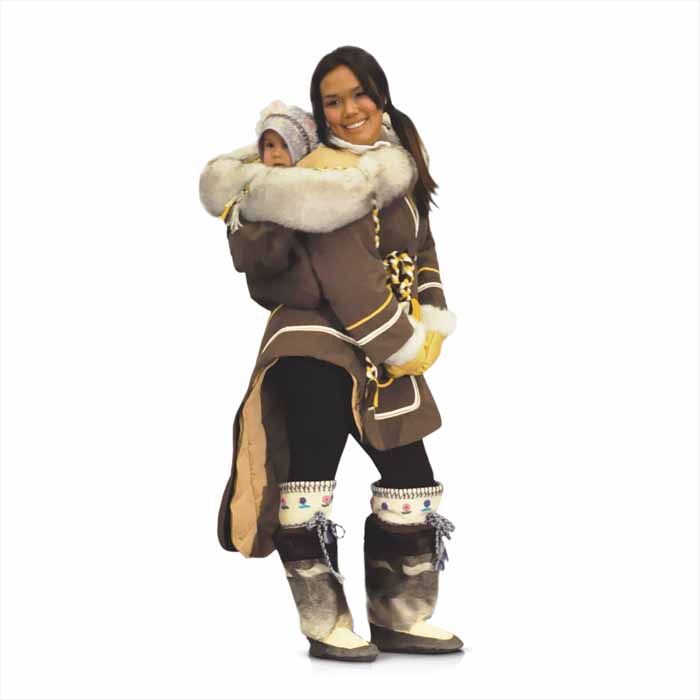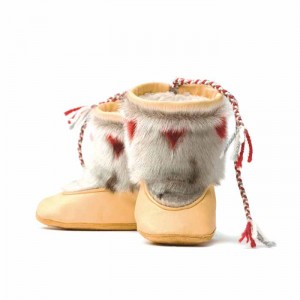 Coveted in the north for their exquisite designs, Inuit-made sealskin goods and parkas have a deserved reputation for quality and warmth.
Coveted in the north for their exquisite designs, Inuit-made sealskin goods and parkas have a deserved reputation for quality and warmth.
Created by the Makavik Corporation with the help of Victoria Okpik from Quaqtaq, Nunavik Creations produces traditional Inuit-designed parkas, luxurious fur coats and sophisticated accessories for an international market.
Makavik recruited Okpik, a graduate of the distinguished Fashion Design program at Montreal’s LaSalle College, shortly after she completed her degree.
“They called me to see if I could help them start up this clothing company back in 2000 when I finished school and that was how I started. This was a socio-economic development project that was sponsored by Makavik,” explained Okpik.
Okpik picked up her trade in the traditional way – at home with her family, working as Nunavimmiut have for thousands of years with caribou furs, sealskins, intestinal remains, thread made of dried tendons and walrus ivory for needles. But Okpik was able to take the Inuit skills at making durable, warm and functional winter garments to a whole new level.
Since traditional garment-making is part of the school curriculum in Nunavik, there is a foundation of skilled craftspeople that helps the industry thrive.
“Most people up north have a basic knowledge on how to make their own garments because you usually have to make them for your whole family. They don’t really wear store-bought clothing in the wintertime; instead they make their own parkas, mittens, hats and kamiks (boots). All of our communities have their own sewing centres so that people can learn and help each other,” said Okpik.
 While Okpik works with a team of three seamstresses in their Montreal workshop, another sewing centre in Inukjuak employs two full-time seamstresses.
While Okpik works with a team of three seamstresses in their Montreal workshop, another sewing centre in Inukjuak employs two full-time seamstresses.
Now 15 years old, the business took a while to get established as the seamstresses needed training to finish garments with furs and leathers, Okpik noted. Then the brand and logo had to be created. Now their products are starting to take off and the market is expanding.
“The mittens are very popular as are the slippers and miqqulik (hats) at the online store. We have really been working on marketing the line in Europe, in places like Holland, Switzerland, France and Denmark. Our original intention was to have these Inuit-made garments available to the world and this is where we are at right now,” explained Okpik.
“A lot of people ask why our products are so expensive, but they are locally made and we have to pay for the women we employ,” she added.
While these products don’t come cheap – with mittens starting at $249, sealskin purses at $449, parkas at $999 and fur and sealskin coats in the $4339-$6089 price range – the pricing is comparable with the rest of the fur industry.
Besides ensuring that there is enough inventory to meet the demand of the online store, Okpik said the company’s dedicated seamstresses are also working on the garments for Nunavik team members participating at the Arctic Winter Games.
“The event will take place in March, and we need to be able to produce about 100 coats,” said Okpik.
Because of the high quality and warmth of their products, Okpik said Nunavik Creations is growing in popularity, and their products are now available in various First Nations communities and Indigenous businesses in the far north and the Quebec City region.
For more info: www.nunavikcreations.com

